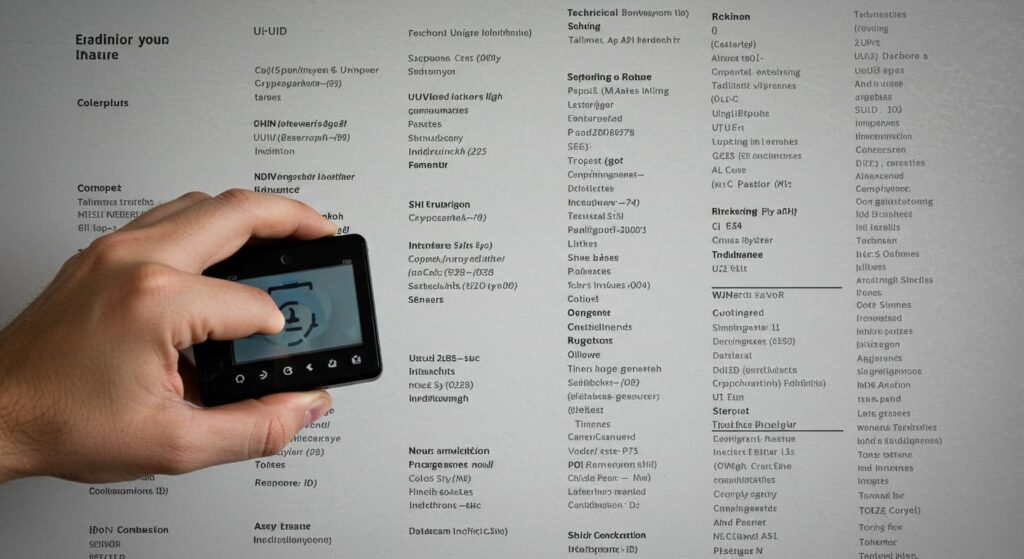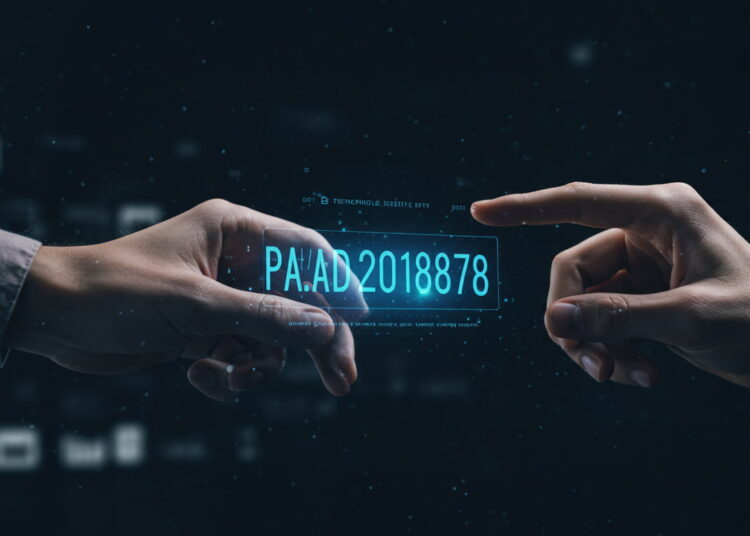In the rapidly evolving world of digital technology, unique identifiers like paad2013878 are becoming increasingly important. Whether in software development, cybersecurity, digital asset tracking, or blockchain frameworks, such alphanumeric tags play a critical role in system integration and secure data management.
But what exactly is paad2013878? How does it function, and why is it relevant in today’s digital landscape? This article provides a detailed exploration of the term, its possible interpretations, use cases, significance, and future implications in various technological domains.
What Is paad2013878?
The term paad2013878 appears to be a structured digital identifier. Based on its syntax and format, it could serve several functions:
- A product code in a software system
- A unique user or transaction ID
- A reference in a blockchain ledger
- A cryptographic signature
- A serial identifier for an encrypted digital asset
In many tech ecosystems, such identifiers are auto-generated or assigned to track objects, manage digital rights, ensure version control, or secure data pathways.
Interpreting the Structure of paad2013878
Breaking down the term, we can speculate:

- paad: Could stand for “Platform Authentication and Access Directory,” “Personalized Autonomous Application Deployment,” or be an internal code representing a subsystem.
- 2013: Possibly the year of creation, project inception, or version number.
- 878: A unique sequential number, user code, or part of a cryptographic hash.
This structure reflects how enterprises and developers often name internal tools, repositories, or data strings for tracking and management.
Possible Applications of paad2013878
Let’s examine key areas where a term like paad2013878 could be actively used:
1. Software Development Lifecycle (SDLC)
In agile environments, unique tags like paad2013878 might be used to mark:
- Source code commits
- Feature flags or rollouts
- Issue tracking (e.g., GitHub, Jira)
- Deployment branches
These IDs help maintain audit trails, automate pipelines, and ensure traceability.
2. Cybersecurity Systems
In information security frameworks, identifiers like paad2013878 play roles in:
- Token-based authentication
- Secure API key management
- Digital signature verification
- Access logs and incident forensics
Each login, access attempt, or policy change could be associated with an ID like this.
3. Blockchain & Web3 Ecosystems
In decentralized applications (dApps) or smart contracts, paad2013878 may represent:
- A smart contract address
- A digital asset or NFT ID
- A transaction log
- Wallet registration
With the rise of digital ownership, these identifiers ensure transparency and trust.
4. IoT and Embedded Systems
In an Internet of Things (IoT) network, paad2013878 could denote:
- A device ID for edge computing nodes
- Firmware version identifiers
- Unique logs for telemetry data
These systems rely heavily on identifiers to communicate and coordinate securely.
Also read:Jesse Hutch Paralyzed
Benefits of Using Unique Identifiers Like paad2013878
Let’s explore why structured IDs like paad2013878 are essential in modern systems.
1. Traceability and Accountability
Every user interaction, code change, or system update can be tracked via such IDs, which supports compliance, debugging, and audits.
2. Enhanced Security
When integrated into encryption mechanisms or access controls, paad2013878 adds an additional layer of validation and integrity assurance.
3. Interoperability
In multi-platform environments, shared ID systems like paad2013878 can help bridge APIs, microservices, and distributed architectures seamlessly.
4. Efficiency in Large-Scale Systems
Massive data centers and cloud infrastructures depend on efficient indexing and lookup capabilities, where such tags serve as high-performance keys.
Real-World Use Cases for paad2013878
Case Study 1: Enterprise Identity Management
Imagine a Fortune 500 company with 100,000+ employees. Each user’s digital activity—from logging into a virtual machine to updating a cloud resource—gets tagged with a structured ID like paad2013878. This helps security teams detect anomalies, control permissions, and maintain system hygiene.
Case Study 2: NFT Tracking on Blockchain
A digital art platform uses paad2013878 to mark a unique collectible minted in 2013 and sold multiple times. This ID traces the entire transaction history, ownership transfer, and metadata lineage. The identifier becomes part of the digital artwork’s story.
Case Study 3: Code Deployment Monitoring
A DevOps team deploys versioned microservices across Kubernetes clusters. Each deployment is tagged with a unique ID such as paad2013878. Logs, rollback points, and performance metrics link back to this tag, allowing fast troubleshooting and rollback.
The Technical Backbone of Identifiers Like paad2013878
Behind the scenes, these identifiers are often generated using one or more of the following techniques:

- UUID (Universally Unique Identifier)
- SHA-based cryptographic hashes
- Time-based sequences
- Database-generated incremental IDs
They are embedded in databases, API headers, code commits, tokens, and blockchain transactions, ensuring consistency across environments.
SEO Perspective: Why Content on Keywords Like paad2013878 Matters
From a content strategy angle, writing about lesser-known or code-based keywords like paad2013878 offers strong long-tail SEO potential. Here’s why:
- Low competition: Few websites target such specific terms, so ranking is easier.
- Niche audience targeting: Developers, engineers, or analysts looking for internal documentation or use cases will appreciate such content.
- Content freshness: Unique identifiers can anchor new, original content in highly technical fields.
- High authority: Providing explanations and technical breakdowns builds topical authority in your domain.
Also read:Dillon Reidenauer
Future Outlook: Where Can paad2013878 Go from Here?
1. Integration with AI Systems
AI-based tools like ChatGPT, GitHub Copilot, or automated DevOps bots could tag each task or output with an ID such as paad2013878. This enhances transparency and traceability in AI workflows.
2. Compliance and Regulation Use
Governments may require digital companies to associate every data point, user interaction, or financial transaction with structured identifiers to meet GDPR, HIPAA, or SEC compliance. IDs like paad2013878 become a legal requirement.
3. Semantic Web and Knowledge Graphs
As the internet becomes more semantically organized, structured IDs like paad2013878 could be part of schema markup, helping machines understand and link complex datasets.
FAQs About paad2013878
1. Is paad2013878 a real product or code?
No public product is directly linked to paad2013878, but it resembles common digital identifiers used in systems for logging, tracking, or security.
2. Can I create similar identifiers for my own system?
Yes. Using UUIDs, hash functions, or naming conventions, you can generate identifiers tailored to your app or enterprise use case.
3. Is paad2013878 searchable in public databases?
Unless specifically published, such IDs are often internal. You might find references if they’re logged in public blockchain systems or GitHub repos.
4. Is there any meaning behind the numbers in paad2013878?
The numbers could denote a version, year (e.g., 2013), or sequencing number (878). Without a public reference, this remains speculative.
5. How do identifiers like paad2013878 help in cybersecurity?
They allow you to trace who did what, when, and where—essential for breach detection, audit trails, and forensic investigations.
6. Is paad2013878 used in any blockchain networks?
There’s no confirmed record, but such identifiers are commonly used as transaction hashes, token IDs, or contract references in blockchain systems.
7. Can this keyword be used in metadata tagging?
Yes. Structured tags like paad2013878 are often embedded in JSON metadata, especially for digital assets or configuration files.
8. How long should a digital ID like paad2013878 be?
There’s no universal rule, but 10–20 characters is common. It should be unique, traceable, and resistant to collision.
9. What industries use structured IDs most?
Technology, finance, cybersecurity, healthcare, logistics, and blockchain—all rely heavily on unique identifiers for system integrity.
10. Is it safe to share paad2013878 publicly?
Conclusion:
paad2013878 may look like a simple code, but it reflects the growing importance of structured digital identifiers in today’s tech-driven world. From securing data to tracking user activity and enabling smart systems, such IDs are essential for building reliable and scalable digital infrastructures. As technology advances, the role of identifiers like paad2013878 will only become more significant across industries.
Related post:
















